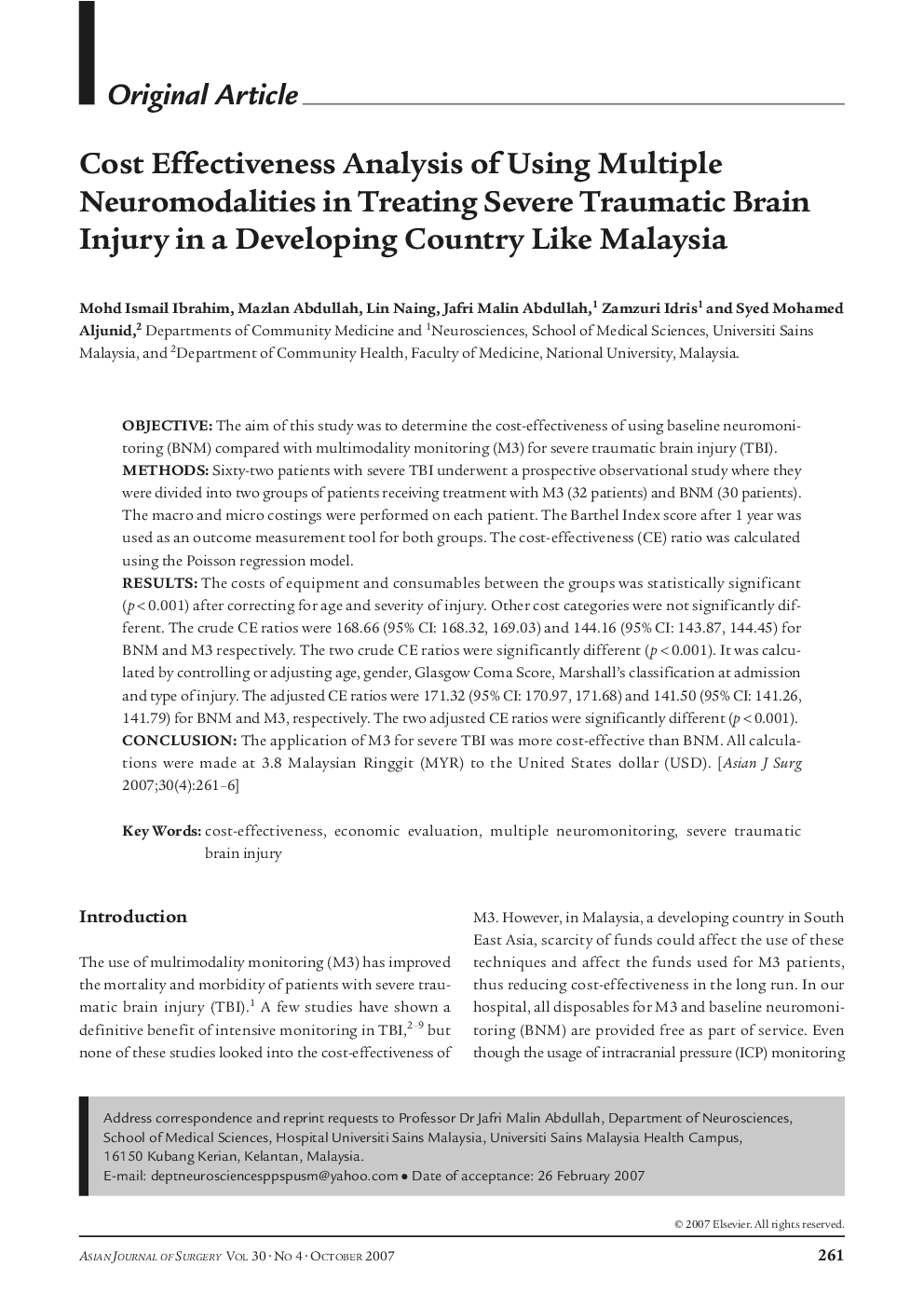| Article ID | Journal | Published Year | Pages | File Type |
|---|---|---|---|---|
| 4282812 | Asian Journal of Surgery | 2007 | 6 Pages |
OBJECTIVEThe aim of this study was to determine the cost-effectiveness of using baseline neuromonitoring (BNM) compared with multimodality monitoring (M3) for severe traumatic brain injury (TBI).METHODSSixty-two patients with severe TBI underwent a prospective observational study where they were divided into two groups of patients receiving treatment with M3 (32 patients) and BNM (30 patients). The macro and micro costings were performed on each patient. The Barthel Index score after 1 year was used as an outcome measurement tool for both groups. The cost-effectiveness (CE) ratio was calculated using the Poisson regression model.RESULTSThe costs of equipment and consumables between the groups was statistically significant (p < 0.001) after correcting for age and severity of injury. Other cost categories were not significantly different. The crude CE ratios were 168.66 (95% CI: 168.32, 169.03) and 144.16 (95% CI: 143.87, 144.45) for BNM and M3 respectively. The two crude CE ratios were significantly different (p < 0.001). It was calculated by controlling or adjusting age, gender, Glasgow Coma Score, Marshall's classification at admission and type of injury. The adjusted CE ratios were 171.32 (95% CI: 170.97, 171.68) and 141.50 (95% CI: 141.26, 141.79) for BNM and M3, respectively. The two adjusted CE ratios were significantly different (p < 0.001).CONCLUSIONThe application of M3 for severe TBI was more cost-effective than BNM. All calculations were made at 3.8 Malaysian Ringgit (MYR) to the United States dollar (USD).
